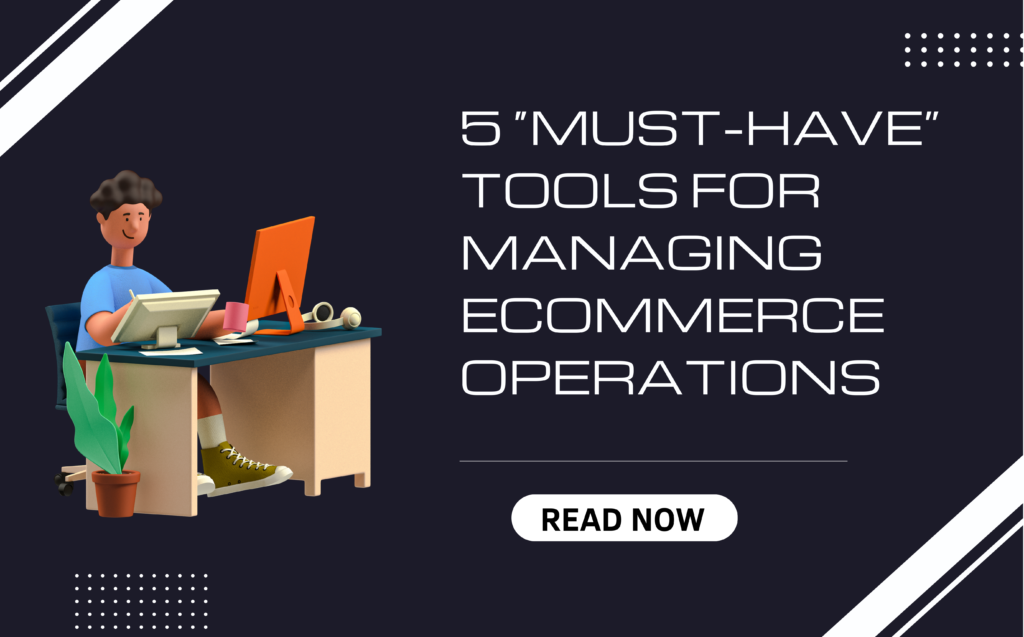

5 “Must-Have” Tools for Managing Ecommerce Operations
In the fast-paced world of ecommerce, staying ahead of the competition requires the right tools at your disposal. According to leading experts like a Managing Director and a founder and CEO, the right platform can make all the difference. This article kicks off with insights on how Shopify has become the backbone of efficient operations and wraps up with the importance of MailerLite for customer communication. Dive in to discover a total of five essential tools that can transform your business operations.
For House of Enki, Shopify has been a game-changer in managing our ecommerce operations. Its user-friendly interface allows us to update product listings, track inventory, and monitor sales metrics in real time, which is crucial for a retailer like us with a diverse product catalogue.
One standout feature is Shopify’s ability to integrate seamlessly with third-party apps. For instance, we use an inventory management app that syncs with our warehouse, ensuring stock levels are always accurate across all channels. This has significantly reduced overselling and backorders, leading to a 25% drop in customer complaints related to delayed shipments.
Another game-changer has been the analytics dashboard. By analysing customer behaviour and sales trends, we identified a spike in interest for specific product bundles. We leaned into this data and created targeted promotions, which resulted in a 30% increase in average order value over three months.
For any ecommerce business, a robust, scalable platform like Shopify is more than a convenience-it’s the backbone of efficient operations and strategic growth.

Dimitri Zobnin, Managing Director, House of Enki
Google Analytics 4 has transformed how we optimize e-commerce operations. Beyond basic traffic data, it reveals crucial customer behavior patterns that drive real business decisions.
Example: For a local fashion retailer, GA4’s enhanced e-commerce tracking helped us identify that mobile users were abandoning carts at the shipping page. After optimizing the mobile checkout flow, their conversion rate jumped 35%.
Key benefits we’ve seen:
One practical tip: Set up custom funnels to track specific user paths. This helped us boost a client’s average order value by 28% by identifying optimal upsell placement.

Harmanjit Singh, Founder and CEO, Origin Web Studios
There’s this one tool I can’t imagine managing eCommerce operations without: Tailwind. It’s been like having an extra set of hands for my Pinterest strategy. I remember when I first started scaling, the idea of balancing marketing with everything else felt overwhelming. My pins were either posted in a burst of enthusiasm or forgotten entirely. Not exactly a recipe for consistent growth, right?
Then I discovered Tailwind. Scheduling pins weeks in advance became a game-changer. It meant I could batch my creative work during focused moments, schedule it, and step away to enjoy more time with family. One evening, I was sipping tea after putting my kids to bed and noticed my website traffic spiking—while I wasn’t even logged in! That’s when it clicked: consistency doesn’t mean constant effort; it means having a system.
Quick insider Pinterest tip: Focus on your evergreen content. Pinning those posts that answer common questions or solve recurring problems for your audience keeps your brand visible for months, even years. With Tailwind, I could experiment with different times, intervals, and visuals to see what resonated most, and it’s still my go-to for staying on top of Pinterest without sacrificing the things that matter most to me.
So, next time you’re wrestling with the work-life balance thing, give yourself permission to automate a little. You’ll thank yourself when your audience grows—and your weekends stay intact.

Laura Rike, CEO, SimplyPintastic®
One tool I consider essential for managing our operations is MailerLite. While it’s not specifically an eCommerce platform, its robust automation and segmentation features have been invaluable for managing customer communication. It allows us to create personalized email sequences from welcome emails to post-purchase follow-ups. This has made a significant difference by increasing customer retention and repeat business, helping us nurture relationships more effectively without spending excessive time on manual outreach. It’s an essential tool for maintaining consistent engagement with our growing customer base.

Kristin Marquet, Founder & Creative Director, Marquet Media
For managing our eCommerce operations, Shopify is absolutely essential. It offers an all-in-one solution with hosting, store management, and a variety of tools, making it ideal for both physical and online stores. With Shopify, all our data is centralized, and comprehensive reports are readily available, helping us make informed decisions across sales, marketing, and operations.
The ability to integrate apps for additional functionality has been a game-changer. Whether it’s streamlining sales processes, enhancing marketing campaigns, or managing inventory, Shopify keeps everything organized and easy to use for the entire team. It’s user-friendly enough for sales associates and robust enough for operational needs, making it the backbone of our business operations.



© 2024 eCommerce Manager. All rights reserved